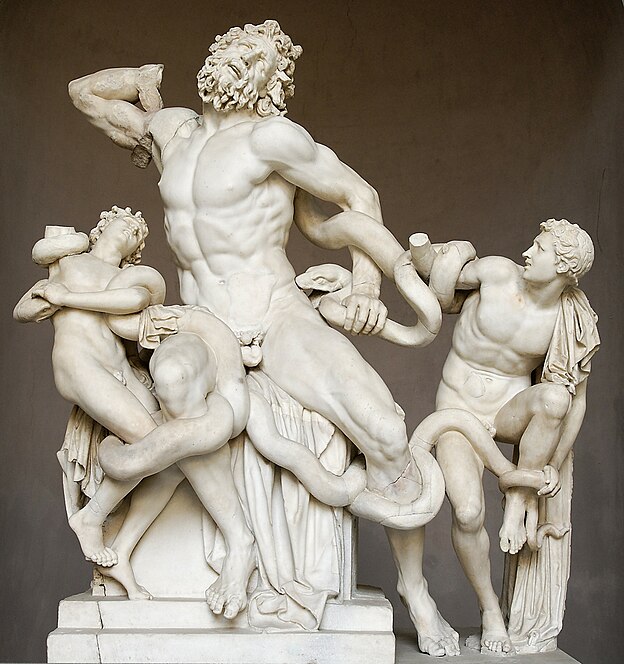
This fresh ink is courtesy of my friend Ceyhun, from Istanbul. It's the Laocoön group, a late Hellenistic statue now in the Vatican Museum. Laocoön has a minor role in the Epic Cycle as the guy who warns everyone that the Trojan horse is a trick!
Equo ne credite, Teucri, timeo Danaos et dona ferentesFor his trouble, Athena sends a giant snake to devour him and his sons. (Or, just maybe, it was actually his punishment for having sex with his wife in a temple.)
"Don't trust the horse, Trojans - I fear the Greeks, even when they bring gifts" (Aeneid II.49)

Attributed to Agesander, Athenodorus, and Polydorus of Rhodes, the statue was found in 1506 in the remains of Nero's Domus Aurea in Rome. The thing was ridiculously influential on Michelangelo and other Renaissance artists, then on Classicists like Winckelmann and Lessing. Napoleon jacked it in 1799 and parked it in the Louvre until his fall from power.
The sculptures in the group were rearranged in antiquity, then again after their rediscovery. Blake reinterpreted it as a polemic against Classical Art. The whole thing was rebuilt in 1906 after the discovery of missing fragments. This parade of transformations creates a conceptual stratigraphy that eclipses whatever the sculptors meant for it back in the day - so moving the image to the elastic medium of skin is a fitting tribute to its stretchy, slippery history.



Ha, I want one of those ^^
ReplyDelete